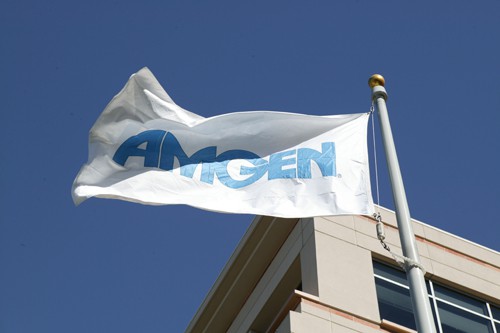
Amgen and partner UCB have reported positive phase III data for osteoporosis candidate romosozumab that they say puts the drug on course for regulatory filings before year-end.
Romosozumab is an anti-sclerostin antibody in development for women with post-menopausal osteoporosis, and was found to significantly reduce the incidence of new vertebral fractures in this patient group in the just-announced FRAME study.
A monthly injection of the antibody cut the fracture rate at both 12 and 24 months – the two primary outcome measures in FRAME – compared to placebo. Importantly, at 12 months the reduction was around 73 per cent, indicating that romosozumab can get to work quickly in reducing risk.
However the drug failed to meet the secondary objective of reducing the incidence of non-vertebral fractures, although the combined reduction in vertebral and non-vertebral fractures was significant, according to Amgen.
Meeting the primary endpoint of the trial means that Amgen and UCB will now take the data to regulatory authorities around the world “in anticipation of a potential filing in 2016”.
Amgen’s executive vice president for R&D, Sean Harper, has previously suggested that – based on the published guidances by regulators around the world and discussions with regulators – positive FRAME data should be sufficient to support approval. Those comments came before the publication of the results however, and the missed secondary endpoint.
In the FRAME study, patients were switched from romosozumab or placebo to treatment with Amgen’s RANK ligand inhibitor Prolia (denosumab) in the second 12-month treatment period. There was a 75% reduction in the risk of new fractures in the group previously treated with romosozumab, compared to a 36% reduction in the placebo group.
Amgen is also conducting a phase III study of similar design comparing romosozumab to the widely-used bisphosphonate drug alendronate in year one, followed by both cohorts being treated with alendronate in year two.
The design of both studies reflects Amgen and UCB’s intention to position romosozumab as a therapy for patients at high-risk of fractures, with the antibody providing a rapid reduction in risk whilst also being compatible with drugs used for long-term maintenance therapy.
The use of the drug in a short-term manner should reduce the chances of side effects caused by reduced sclerostin function, which plays a role in congenital conditions such as van Buchem disease and sclerosteosis characterised by bone overgrowth and hearing disturbances.
Amgen and UCB have previously reported data showing romosozumab was superior to Eli Lilly’s parathyroid hormone-based Forteo (teriparatide), which requires daily dosing by injection. Forteo is widely used in osteoporosis therapy and brought in sales of around $1.35bn last year.
Romosozumab was previously in development to accelerate the healing of fractures, but failed to show efficacy in that indication in phase II trials.




